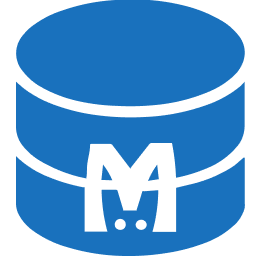You are looking at the documentation of a prior release. To read the documentation of the latest release, please
visit here.
New to KubeDB? Please start here.
Restart Kafka
KubeDB supports restarting the Kafka database via a KafkaOpsRequest. Restarting is useful if some pods are got stuck in some phase, or they are not working correctly. This tutorial will show you how to use that.
Before You Begin
At first, you need to have a Kubernetes cluster, and the kubectl command-line tool must be configured to communicate with your cluster. If you do not already have a cluster, you can create one by using kind.
Now, install KubeDB cli on your workstation and KubeDB operator in your cluster following the steps here.
To keep things isolated, this tutorial uses a separate namespace called
demothroughout this tutorial.
$ kubectl create ns demo
namespace/demo created
Note: YAML files used in this tutorial are stored in docs/examples/kafka folder in GitHub repository kubedb/docs.
Deploy Kafka
In this section, we are going to deploy a Kafka database using KubeDB.
apiVersion: kubedb.com/v1
kind: Kafka
metadata:
name: kafka-prod
namespace: demo
spec:
version: 3.9.0
topology:
broker:
replicas: 2
podTemplate:
spec:
containers:
- name: kafka
resources:
requests:
cpu: "500m"
memory: "1Gi"
storage:
accessModes:
- ReadWriteOnce
resources:
requests:
storage: 1Gi
storageClassName: standard
controller:
replicas: 2
podTemplate:
spec:
containers:
- name: kafka
resources:
requests:
cpu: "500m"
memory: "1Gi"
storage:
accessModes:
- ReadWriteOnce
resources:
requests:
storage: 1Gi
storageClassName: standard
storageType: Durable
deletionPolicy: DoNotTerminate
spec.topologyrepresents the specification for kafka topology.brokerdenotes the broker node of kafka topology.controllerdenotes the controller node of kafka topology.
Let’s create the Kafka CR we have shown above,
$ kubectl create -f https://github.com/kubedb/docs/raw/v2025.7.31/docs/examples/kafka/restart/kafka.yaml
kafka.kubedb.com/kafka-prod created
Apply Restart opsRequest
apiVersion: ops.kubedb.com/v1alpha1
kind: KafkaOpsRequest
metadata:
name: restart
namespace: demo
spec:
type: Restart
databaseRef:
name: kafka-prod
timeout: 5m
apply: Always
spec.typespecifies the Type of the ops Requestspec.databaseRefholds the name of the Kafka CR. It should be available in the same namespace as the opsRequest- The meaning of
spec.timeout&spec.applyfields will be found here
Note: The method of restarting the combined node is exactly same as above. All you need, is to specify the corresponding Kafka name in
spec.databaseRef.namesection.
Let’s create the KafkaOpsRequest CR we have shown above,
$ kubectl create -f https://github.com/kubedb/docs/raw/v2025.7.31/docs/examples/kafka/restart/ops.yaml
kafkaopsrequest.ops.kubedb.com/restart created
Now the Ops-manager operator will first restart the controller pods, then broker of the referenced kafka.
$ kubectl get kfops -n demo
NAME TYPE STATUS AGE
restart Restart Successful 119s
$ kubectl get kfops -n demo restart -oyaml
apiVersion: ops.kubedb.com/v1alpha1
kind: KafkaOpsRequest
metadata:
annotations:
kubectl.kubernetes.io/last-applied-configuration: |
{"apiVersion":"ops.kubedb.com/v1alpha1","kind":"KafkaOpsRequest","metadata":{"annotations":{},"name":"restart","namespace":"demo"},"spec":{"apply":"Always","databaseRef":{"name":"kafka-prod"},"timeout":"3m","type":"Restart"}}
creationTimestamp: "2024-07-26T10:12:10Z"
generation: 1
name: restart
namespace: demo
resourceVersion: "24434"
uid: 956a374e-1d6f-4f68-828f-cfed4410b175
spec:
apply: Always
databaseRef:
name: kafka-prod
timeout: 3m
type: Restart
status:
conditions:
- lastTransitionTime: "2024-07-26T10:12:10Z"
message: Kafka ops-request has started to restart kafka nodes
observedGeneration: 1
reason: Restart
status: "True"
type: Restart
- lastTransitionTime: "2024-07-26T10:12:18Z"
message: get pod; ConditionStatus:True; PodName:kafka-prod-controller-0
observedGeneration: 1
status: "True"
type: GetPod--kafka-prod-controller-0
- lastTransitionTime: "2024-07-26T10:12:18Z"
message: evict pod; ConditionStatus:True; PodName:kafka-prod-controller-0
observedGeneration: 1
status: "True"
type: EvictPod--kafka-prod-controller-0
- lastTransitionTime: "2024-07-26T10:12:23Z"
message: check pod running; ConditionStatus:True; PodName:kafka-prod-controller-0
observedGeneration: 1
status: "True"
type: CheckPodRunning--kafka-prod-controller-0
- lastTransitionTime: "2024-07-26T10:12:28Z"
message: get pod; ConditionStatus:True; PodName:kafka-prod-controller-1
observedGeneration: 1
status: "True"
type: GetPod--kafka-prod-controller-1
- lastTransitionTime: "2024-07-26T10:12:28Z"
message: evict pod; ConditionStatus:True; PodName:kafka-prod-controller-1
observedGeneration: 1
status: "True"
type: EvictPod--kafka-prod-controller-1
- lastTransitionTime: "2024-07-26T10:12:38Z"
message: check pod running; ConditionStatus:True; PodName:kafka-prod-controller-1
observedGeneration: 1
status: "True"
type: CheckPodRunning--kafka-prod-controller-1
- lastTransitionTime: "2024-07-26T10:12:43Z"
message: get pod; ConditionStatus:True; PodName:kafka-prod-broker-0
observedGeneration: 1
status: "True"
type: GetPod--kafka-prod-broker-0
- lastTransitionTime: "2024-07-26T10:12:43Z"
message: evict pod; ConditionStatus:True; PodName:kafka-prod-broker-0
observedGeneration: 1
status: "True"
type: EvictPod--kafka-prod-broker-0
- lastTransitionTime: "2024-07-26T10:13:18Z"
message: check pod running; ConditionStatus:True; PodName:kafka-prod-broker-0
observedGeneration: 1
status: "True"
type: CheckPodRunning--kafka-prod-broker-0
- lastTransitionTime: "2024-07-26T10:13:23Z"
message: get pod; ConditionStatus:True; PodName:kafka-prod-broker-1
observedGeneration: 1
status: "True"
type: GetPod--kafka-prod-broker-1
- lastTransitionTime: "2024-07-26T10:13:23Z"
message: evict pod; ConditionStatus:True; PodName:kafka-prod-broker-1
observedGeneration: 1
status: "True"
type: EvictPod--kafka-prod-broker-1
- lastTransitionTime: "2024-07-26T10:13:28Z"
message: check pod running; ConditionStatus:True; PodName:kafka-prod-broker-1
observedGeneration: 1
status: "True"
type: CheckPodRunning--kafka-prod-broker-1
- lastTransitionTime: "2024-07-26T10:13:33Z"
message: Successfully Restarted Kafka nodes
observedGeneration: 1
reason: RestartNodes
status: "True"
type: RestartNodes
- lastTransitionTime: "2024-07-26T10:13:33Z"
message: Controller has successfully restart the Kafka replicas
observedGeneration: 1
reason: Successful
status: "True"
type: Successful
observedGeneration: 1
phase: Successful
Cleaning up
To cleanup the Kubernetes resources created by this tutorial, run:
kubectl delete kafkaopsrequest -n demo restart
kubectl delete kafka -n demo kafka-prod
kubectl delete ns demo
Next Steps
- Detail concepts of Kafka object.
- Different Kafka topology clustering modes here.
- Monitor your Kafka database with KubeDB using out-of-the-box Prometheus operator.
- Want to hack on KubeDB? Check our contribution guidelines.



































